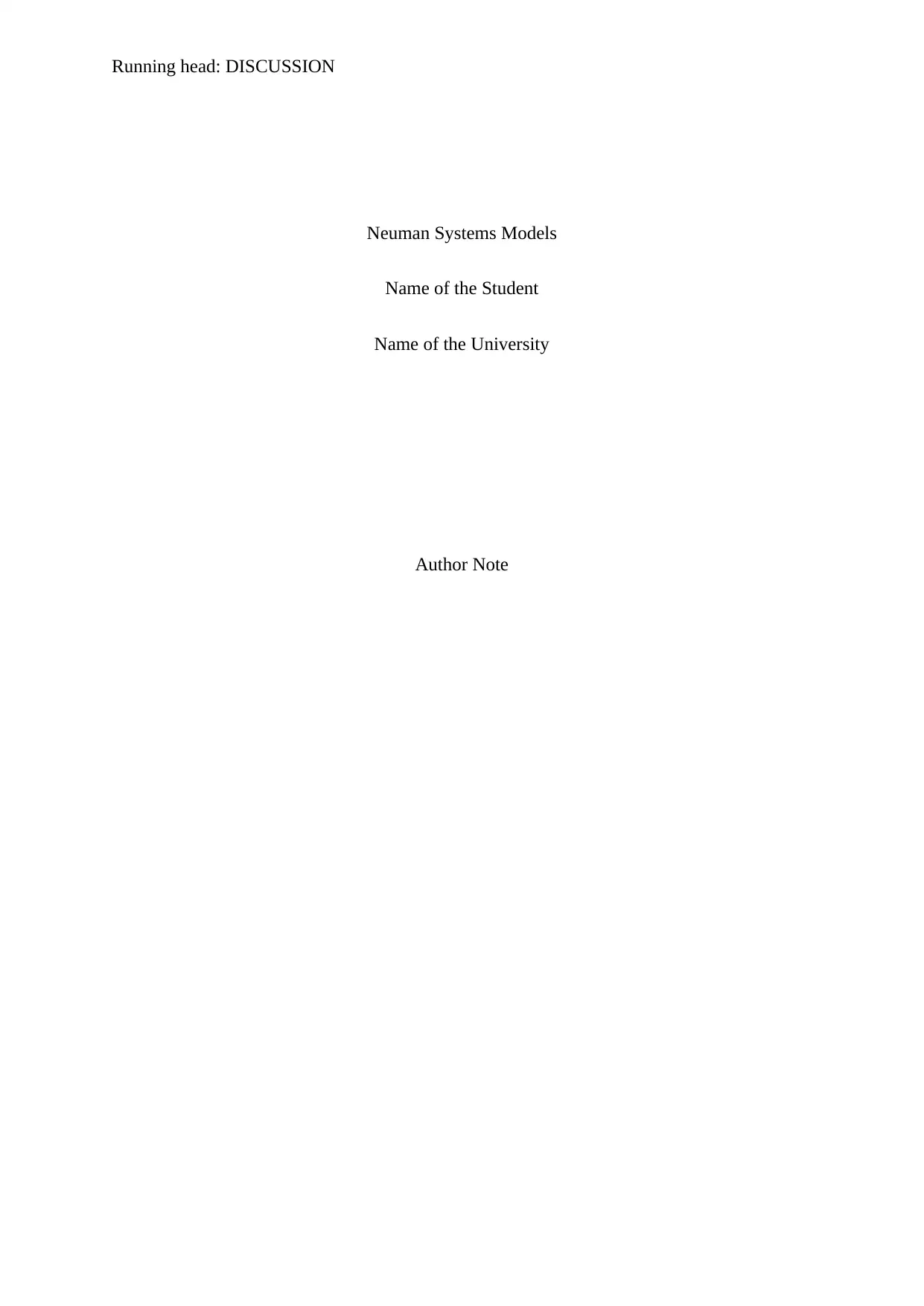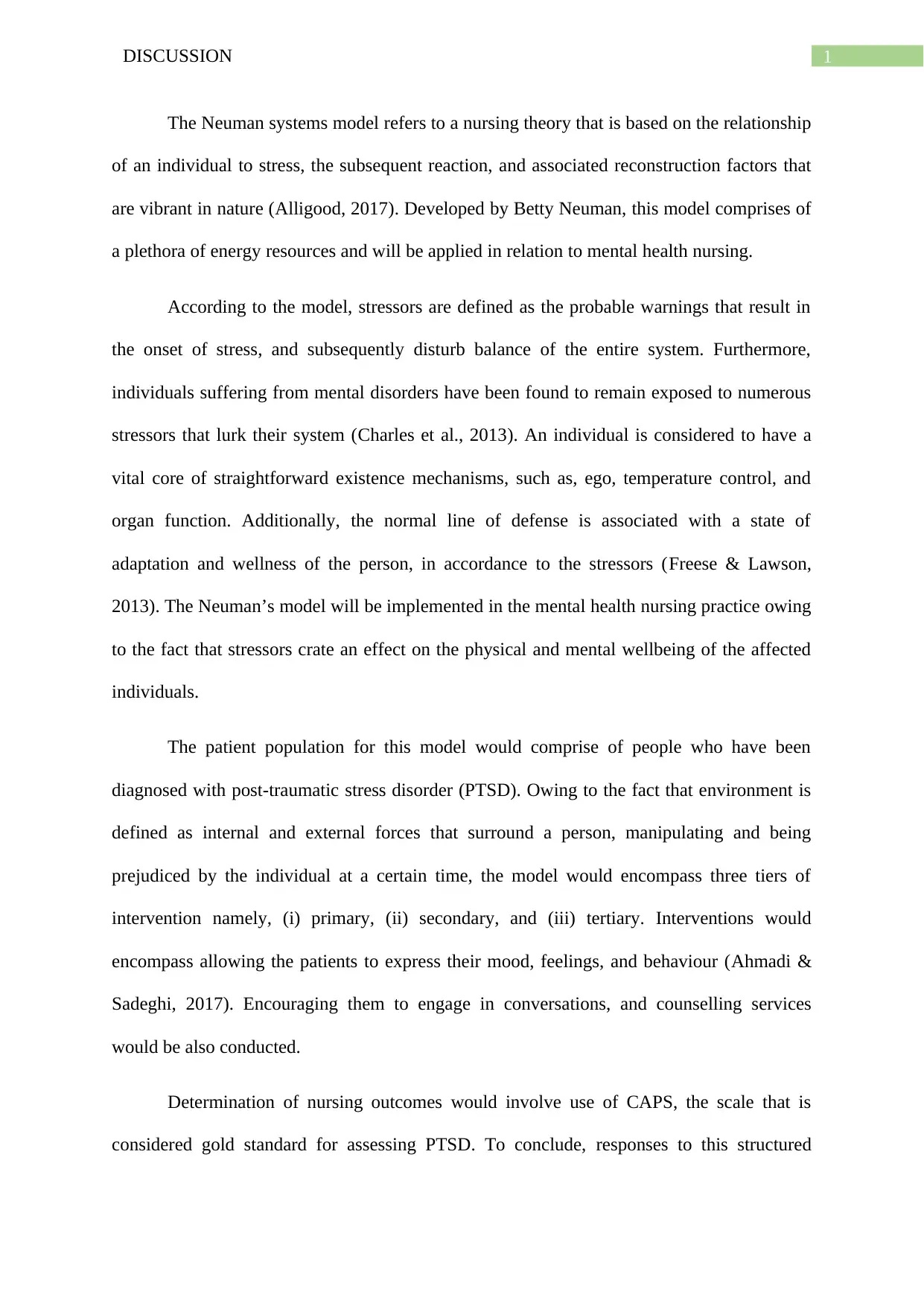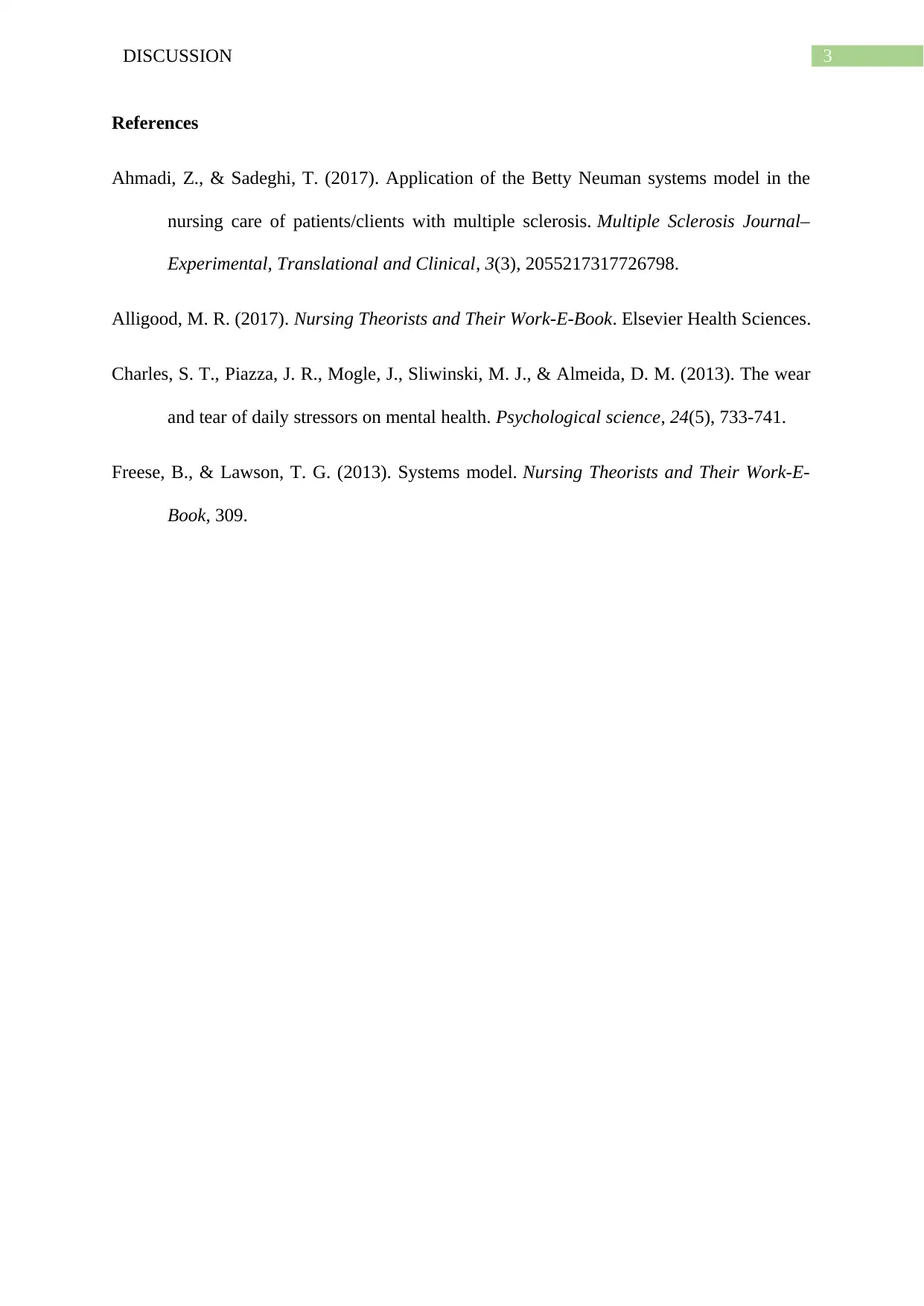Exploring Neuman Systems Model in Mental Health Nursing Context
VerifiedAdded on 2023/04/21
|4
|539
|489
Discussion Board Post
AI Summary
This discussion post explores the application of the Neuman Systems Model in mental health nursing, focusing on patients diagnosed with Post-Traumatic Stress Disorder (PTSD). The assignment begins by defining the model and its core concepts, including stressors, lines of defense, and the importance of the environment. It emphasizes how stressors can impact mental and physical wellbeing. The post outlines the implementation of the model through primary, secondary, and tertiary interventions, such as allowing patients to express their feelings and providing counseling services. The discussion also highlights the use of the CAPS scale for evaluating nursing outcomes. The conclusion emphasizes the value of the Neuman Systems Model in understanding and addressing the mental health needs of patients. The discussion is based on various research studies and nursing theorists, ensuring a comprehensive and evidence-based analysis of the model's application in a mental health context.
1 out of 4





![[object Object]](/_next/static/media/star-bottom.7253800d.svg)